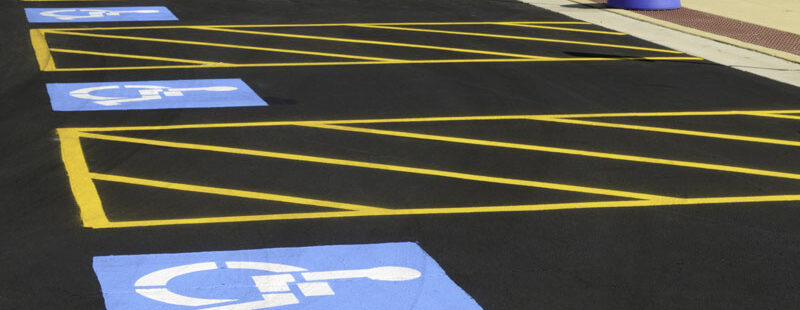
- min min
- No Comments
- November 8, 2025
Weatherproof Roads: How Climate Impacts Surfacing Performance
Across the United Kingdom, no two days of weather are ever the same. Heavy rain, sharp frosts, sudden heatwaves, and long, damp winters all test the strength of every road, driveway, and car park. While most people see roads as permanent fixtures, professionals in the surfacing industry know that climate plays a major role in determining how long those surfaces actually last. Understanding how different weather conditions affect surfacing materials is essential for designing roads that stay smooth, safe, and durable all year round.
The Freeze–Thaw Cycle and Its Hidden Damage
One of the biggest challenges for UK roads is the freeze–thaw cycle that occurs throughout winter. When water seeps into small surface cracks and freezes overnight, it expands. As temperatures rise during the day, the ice melts, leaving behind slightly larger gaps. Repeated hundreds of times each season, this process gradually widens cracks, weakens the structure, and eventually causes potholes.
Tarmac and asphalt surfaces are especially vulnerable if they were not properly compacted or sealed during installation. Even a minor flaw in workmanship can allow water to penetrate and begin this destructive cycle. High-quality binders and consistent compaction are therefore essential. Proper installation, combined with good drainage and regular surface sealing, can significantly slow down the rate of freeze–thaw damage.
Heavy Rainfall and Drainage Challenges
The UK’s rainfall is another major factor influencing road lifespan. Water is the enemy of weak sub-bases, and when it collects beneath the surface, it can wash away the fine materials that provide structural support. Over time, this leads to surface dips, pooling, and ultimately cracking. Poor drainage design is one of the main reasons newly laid surfaces fail earlier than expected.
Professional contractors plan every surfacing project with the surrounding landscape in mind. They assess slopes, gradients, and water run-off patterns to make sure rainwater drains away quickly rather than soaking into the base. Using the right aggregate mix and installing proper drainage channels ensures that even during torrential rain, the road remains stable and safe for vehicles.
Heatwaves and Material Expansion
While Britain is not known for extreme heat, recent years have shown that summer temperatures are rising. During heatwaves, road surfaces can soften and expand. Tarmac in particular becomes more flexible at high temperatures, which can lead to deformation under heavy traffic. If this process repeats year after year, ruts or depressions may appear, especially on roads that carry lorries or buses.
The key to preventing heat-related damage lies in material selection. Modern polymer-modified binders resist softening, maintaining their structure even during high-temperature spells. Machine-lay tarmac provides an even distribution of heat during installation, which further improves the surface’s ability to expand and contract without cracking.
The Role of Proper Sub-Base Construction
Whatever the climate, the foundation of every road is its sub-base. A well-compacted, stable base is crucial for resisting both cold and heat. It acts as a shock absorber, spreading the load evenly across the ground and preventing movement that can cause cracks above. When contractors try to cut costs by rushing or skipping base preparation, the damage may not appear immediately — but it will become visible as soon as the first winter frost or summer rain hits.
High-grade aggregates, properly compacted in layers, ensure that the surface remains stable through changing temperatures and moisture levels. A strong foundation also helps prevent water from reaching the lower levels of the structure, which greatly reduces the risk of frost heave and subsurface erosion.
Adapting to Regional Conditions
Different parts of the UK face unique climatic challenges. Coastal regions experience salt corrosion and constant humidity. Northern counties face longer, colder winters. The South East deals with more heat variation and heavier traffic density. Each environment requires a slightly different approach to surfacing design.
In coastal areas, materials must resist both moisture and salt exposure, which can weaken binders. Inland routes with frequent frost may benefit from additional sealing layers or surface dressings to prevent water ingress. The most effective contractors are those who adapt their techniques and materials to suit local climate and soil conditions rather than applying a one-size-fits-all approach.
Why Maintenance Matters
Even the best-built roads are not immune to the elements forever. Regular maintenance is what keeps them performing at their best. Small cracks, when sealed early, stop water from entering and starting the freeze–thaw process. Cleaning blocked drains prevents water from pooling and undermining the base. Re-surfacing high-traffic areas before cracks deepen can extend a road’s lifespan by many years.
Proactive maintenance schedules save local authorities, businesses, and property owners far more money than emergency repairs. A road that receives consistent care not only lasts longer but also provides a smoother and safer surface for every vehicle that uses it.
Sustainability and Future-Proof Materials
Climate-resilient surfacing is not only about durability; it is also about sustainability. As weather extremes become more common, the industry is moving toward materials that perform well while reducing environmental impact. Recycled asphalt, low-energy binders, and advanced resins all play a role in creating roads that withstand harsh conditions while supporting sustainability goals.
Innovations such as porous asphalt allow water to drain directly through the surface, reducing surface runoff and preventing flooding. Warm-mix asphalt technology lowers production temperatures, cutting carbon emissions while maintaining the same strength and resilience as traditional hot-mix methods. These advances make it possible to build roads that are both environmentally friendly and highly durable.
The Importance of Expertise
No matter how advanced the materials, the outcome ultimately depends on the contractor’s expertise. Designing a surface that resists weather damage requires deep technical understanding — from soil composition to compaction pressure and temperature control. The difference between a surface that lasts five years and one that lasts fifteen often comes down to skill, precision, and experience.
That’s why businesses and local authorities across Hertfordshire trust East Herts Surfacing for their road and commercial surfacing needs. With years of experience handling diverse climates and ground conditions, the company delivers solutions built to endure the unpredictable British weather. Each project is carefully assessed, designed, and executed to ensure maximum longevity and performance.
Conclusion: Building Roads That Withstand the Elements
Weather is an unstoppable force, but its effects on surfacing can be controlled through good design, quality materials, and expert workmanship. The UK’s climate will always pose challenges — from freezing winters to scorching summer days — yet with the right approach, those challenges can be turned into opportunities for innovation and improvement.
Investing in well-planned, weather-resistant surfacing means fewer repairs, lower maintenance costs, and safer roads for years to come. Whether it’s a private driveway, a car park, or a public roadway, the principles remain the same: strong foundations, proper drainage, and professional installation are what separate a temporary fix from a truly weatherproof surface.
For proven expertise and long-term reliability, homeowners, businesses, and councils alike can rely on East Herts Surfacing — specialists who understand that when it comes to the UK climate, only quality endures.





